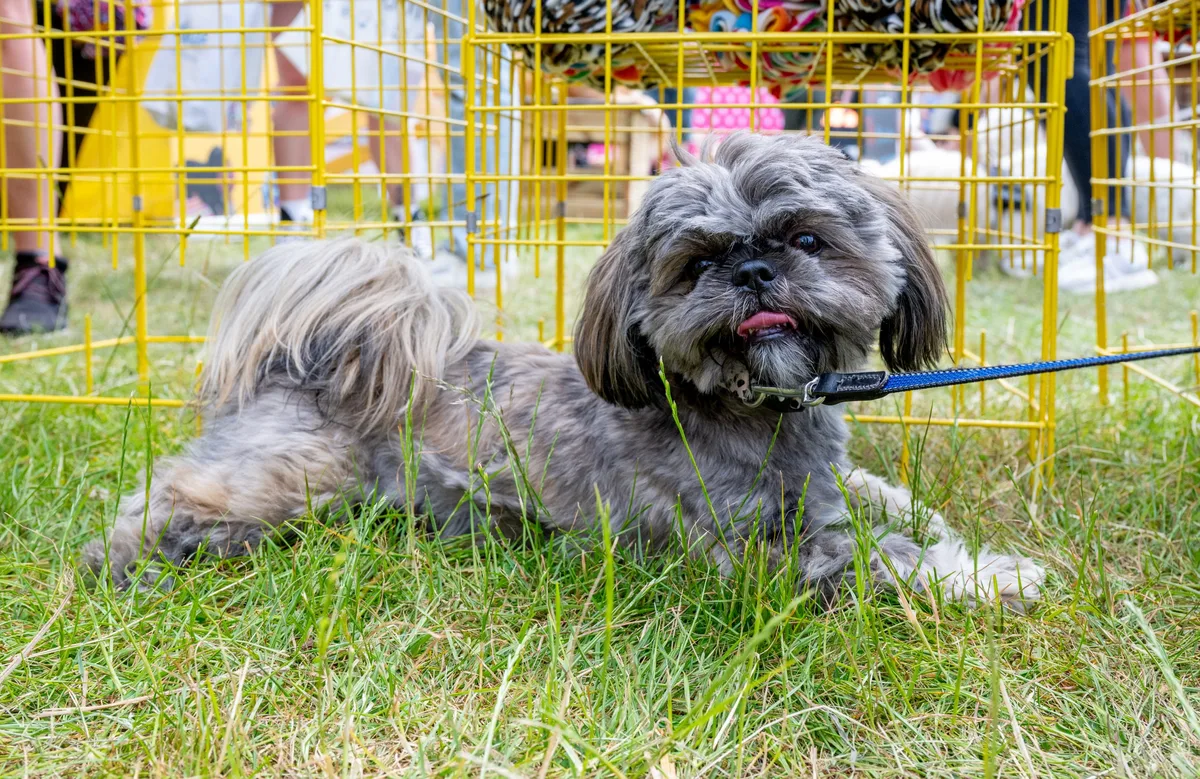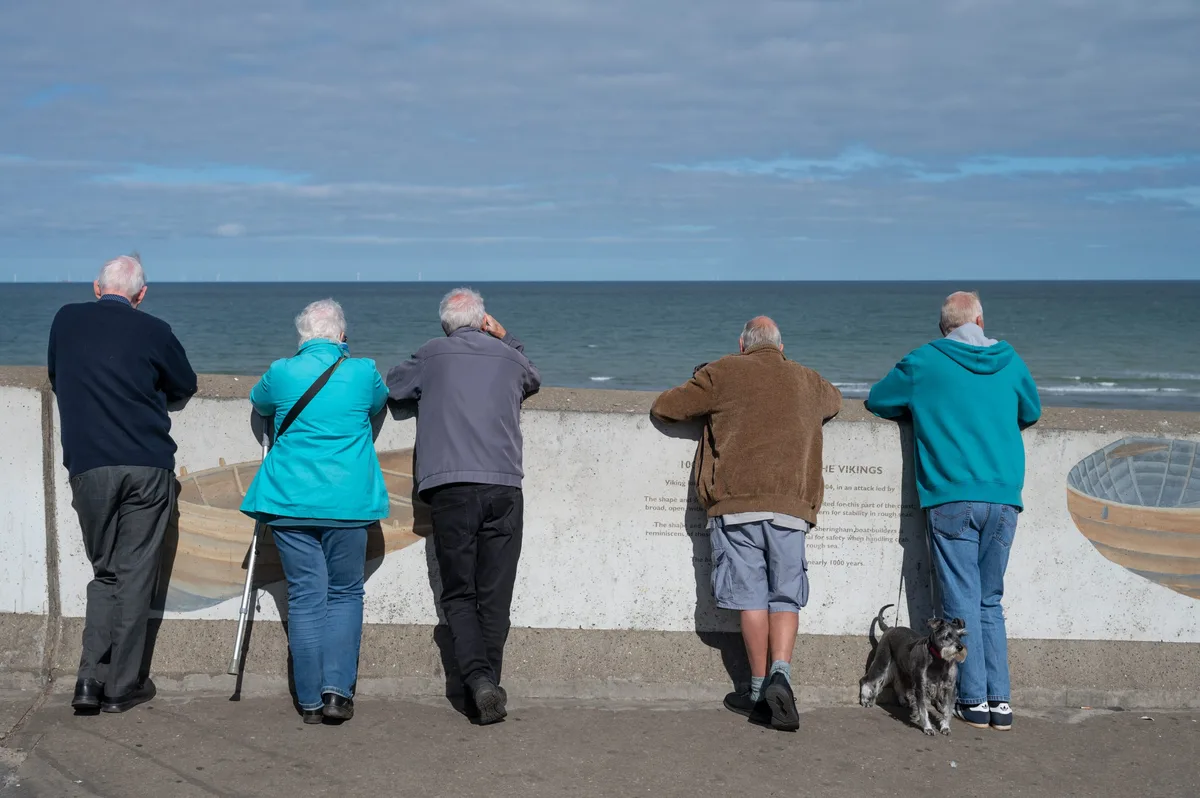While there's no such thing as a 100% hypoallergenic dog (as skin, saliva and urine still contain allergens), there are plenty of breeds that present less of an issue for people with allergies. These breeds shed less and often trap dandruff or hair from their undercoat in their outer coats, which means you'll find less hair all over your carpets and tiles at home.
That said, these dog breeds are often the ones that require the most grooming because long, curly or dense coats can easily tangle or mat. So yes, that means the time you'll save vaccuuming your house may be spent on trimming and grooming your dog!
If allergies are a real concern, talk to your doctor.
Best hypoallergenic dogs that don't shed
Poodle
We're including poodles here, but we're also including cockapoos, cavapoos, labradoodles and other poodle mixes, because the poodle parent passes on their low-shedding coats, making them all a good option for those with allergies.
We named poodles as among the best family dogs. Did you know Winston Churchill owned a miniature poodle named Rufus? We included Rufus in our round-up of Downing Street pets.

Yorkshire terrier
Yorkshire terriers are a good small dog breed to consider if you suffer with allergies, because they don't shed as much as other breeds – and they actually produce less dander (skin cells, hair and other substances – similar to dandruff) than other species. Plus, they have hair rather than fur, which means it's finer and can be better for those with allergies. Find out more about the difference between hair and fur here.

Portuguese water dog
This medium-sized dog breed was originally bred to support fishermen in Portugal, so they're intelligent and highly trainable. Thanks to their thick, curly coat, they don't shed a huge amount. They're high-energy dogs, which need regular exercise – bonus points for swimming – so that's worth considering when you're opting for a Portuguese water dog.

Bichon frise
Bichon frises are small dogs with curly white coats that makes them much less likely to shed than other breeds. Their curls catch the shorter undercoat as it moults, which makes them a good option for allergy sufferers. That said, their hair requires frequent grooming and brushing to catch these hairs caught in the curls.
We named bichon frises as among the smallest dog breeds.

Shih tzu
The shih tzu is a great small dog for those with allergies – and they make a good pet for a number of other reasons too. They were originally bred in Tibet as a royal lapdog, so they still make excellent companions. They're affectionate and playful, but happy to sit on the sofa with human company for hours on end. Like all the other breeds on this list of hypoallergenic dog breeds, however, they'll need regular grooming and periodic haircuts.

Irish water spaniel
These affectionate dogs are another breed of swimmers, originally bred as a wildfowling dog to work on the marshes, bogs and rivers of Ireland. They're highly trainable and have excellent senses, so must be kept stimulated. Irish water spaniels don't shed, but they need to be groomed from when they are puppies. Weekly brushing and bimonthly trims are needed.

Bolognese
The small Bolognese breed of dog is a member of the Bichon family, so has a very similar coat to its Bichon frise counterparts. Its long, fluffy white coat has the texture of cotton, and are usually left untrimmed (except around the eyes). They are companion dogs, so can be anxious if left alone too long – a good option for those who work from home and can spend a lot of time with their dog.

Maltese
Maltese dogs have longer hair than some of the others featured here, but it's just a single-layered coat, so sheds a lot less than other longer-haired dogs. These little dogs have short legs and can look as though they are floating along the floor with their long coat.

Soft coated wheaten terrier
The soft coated wheaten terrier is an outgoing Irish farm dog, originally used for hunting badgers and otters. These medium-sized dogs are easily recognised by their soft, wheat-coloured natural coat, which falls in loose curls or waves. They're happy-go-lucky, confident dogs – but must be well trained to avoid the stubborn terrier temperament becoming overbearing!

Bedlington terrier
The appearance of these Northumberland native dogs have been compared to lambs, due to their long head and fuzzy white coat. They need grooming once a week, require lots of exercise and mental stimulation, but make great family pets.

Schnauzer
There are three breeds of schnauzer: miniature, standard and giant, all of which are hypoallergenic. Generally, the smaller the dog, the less fur there is to collect allergens – so if your allergies are more acute, you might want to plump for a miniature rather than a giant schnauzer. But all three make for great family-oriented pets.
Miniature schnauzers were named among the most popular dog breeds in the UK.

Barbet
The barbet is a medium-sized breed of French water dog, which is found in black, brown, fawn, grey and white. You'll spot them in artworks as early as the 16th century. Their delightfully shaggy coat needs grooming and trimming, but doesn't shed.

Afghan hound
If you looked at an Afghan hound, their majestic head of hair is probably the first thing you'd notice – but surprisingly, this hair doesn't moult. Afghan hound puppies require less maintenance when their coats are shorter, but as this long coat develops in adolescence they'll need regular grooming. They have a regal appearance with a thick, silky coat – which served as a protective layer in the cold, mountaineous regions of Afghanistan, where they were originally bred to hunt large prey.







